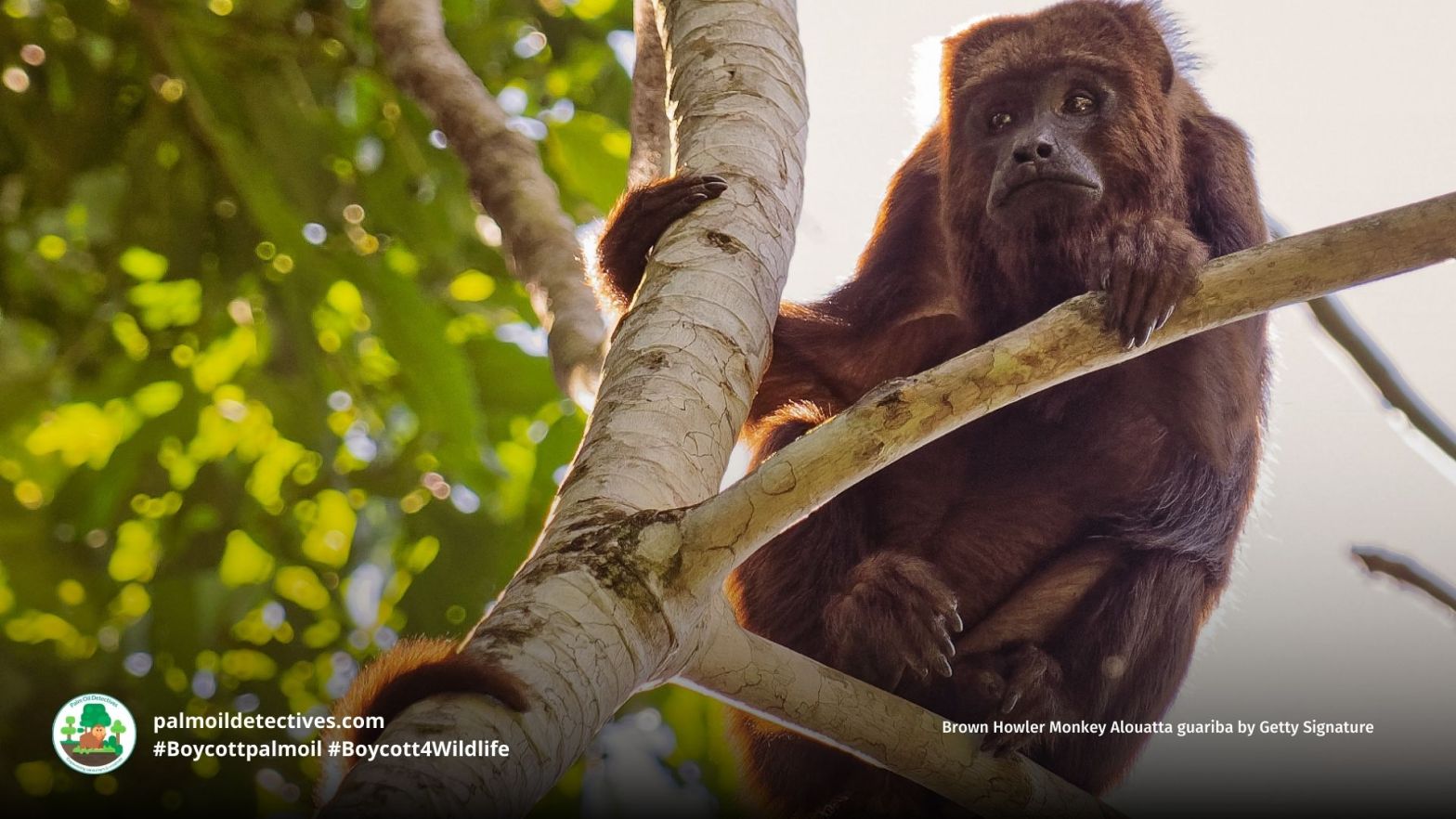Brown Howler Monkey Alouatta guariba
Vulnerable
Extant (resident)
Argentina (Misiones); Brazil (Minas Gerais, Bahia, Espírito Santo, Paraná, Rio de Janeiro, Rio Grande do Sul, Santa Catarina, São Paulo)
Despite their namesake, Brown Howlers come in a variety of colours from buff to reddish orange and brown-black. They are well known for their expressive and loud howling which can be heard from up to 2 kilometres away. Excellent seed dispersers, they are essential for maintaining a healthy rainforest. Only 12% of their forest habitat remains. Protect them every time you shop and #Boycottpalmoil #Boycott4Wildlife
Brown Howler Monkeys are essential seed dispersers helping the #Amazon rainforest to grow. Only 12% of their forest remains. They are #vulnerable from #palmoil and other #deforestation. Help them and #Boycottpalmoil #Boycott4Wildlife
#Tweet
Brown Howlers have a loud yowl that can be heard 2km away. They are #vulnerable from #palmoil and other #deforestation in #Brazil. Use your wallet as a weapon and #Boycottpalmoil #Boycott4Wildlife every time you shop
#Tweet
Widespread forest loss and fragmentation throughout their range are the main threats to Alouatta guariba. Their distributional range largely correlates with the most densely populated regions of Brazil. Only 12% of the original forest coverage is remaining in these areas, fragmented into almost 250 forest fragments, 83.4% of which are smaller than 50 ha (Ribeiro et al. 2009).
IUCN Red List
Brown Howlers have long and prehensile tails, which offer superior purchase on branches as they swing through the tree canopies of the Atlantic forests of Brazil and Argentina. Their unique tails allow them to hang from branches while feeding.
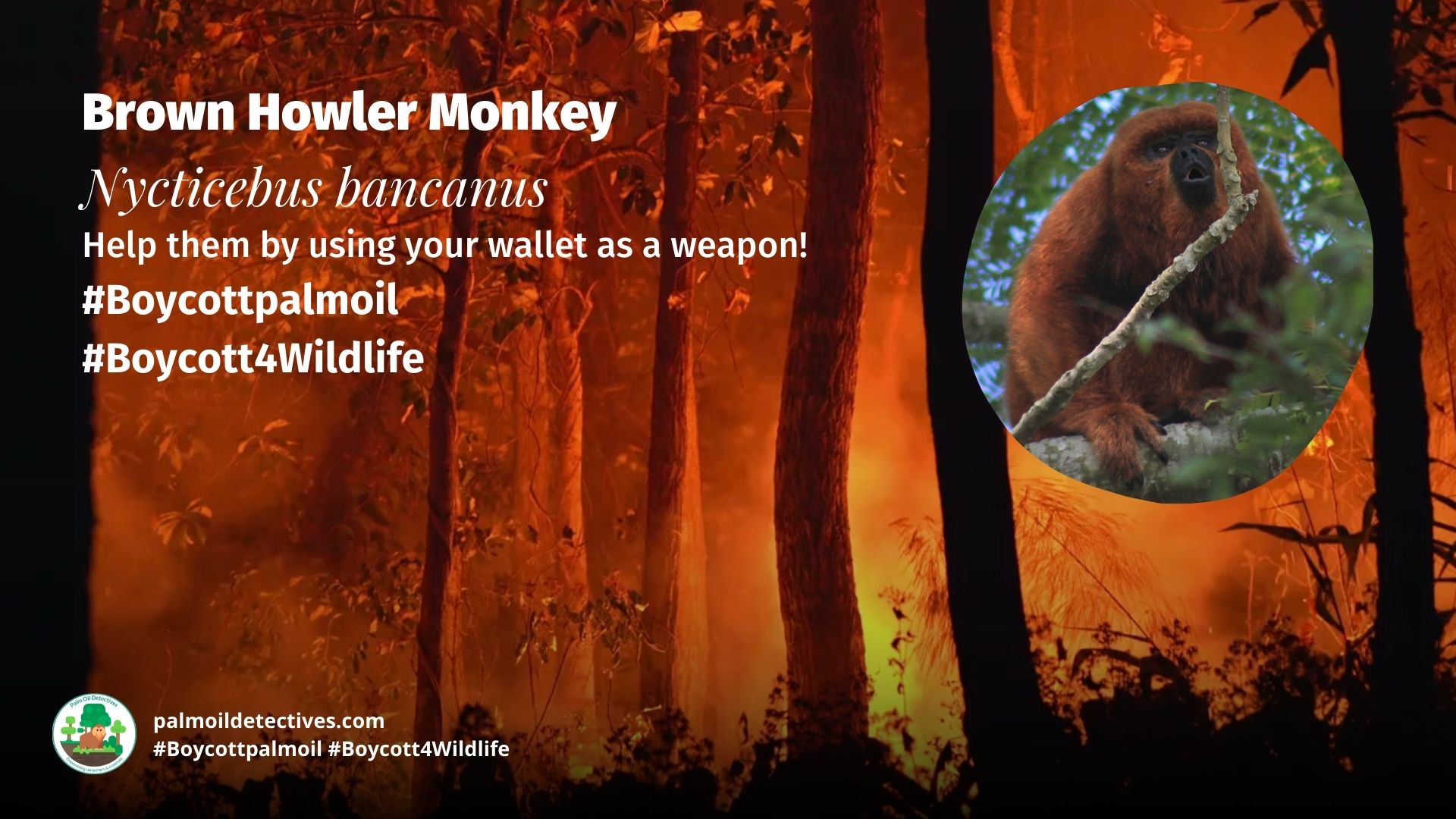
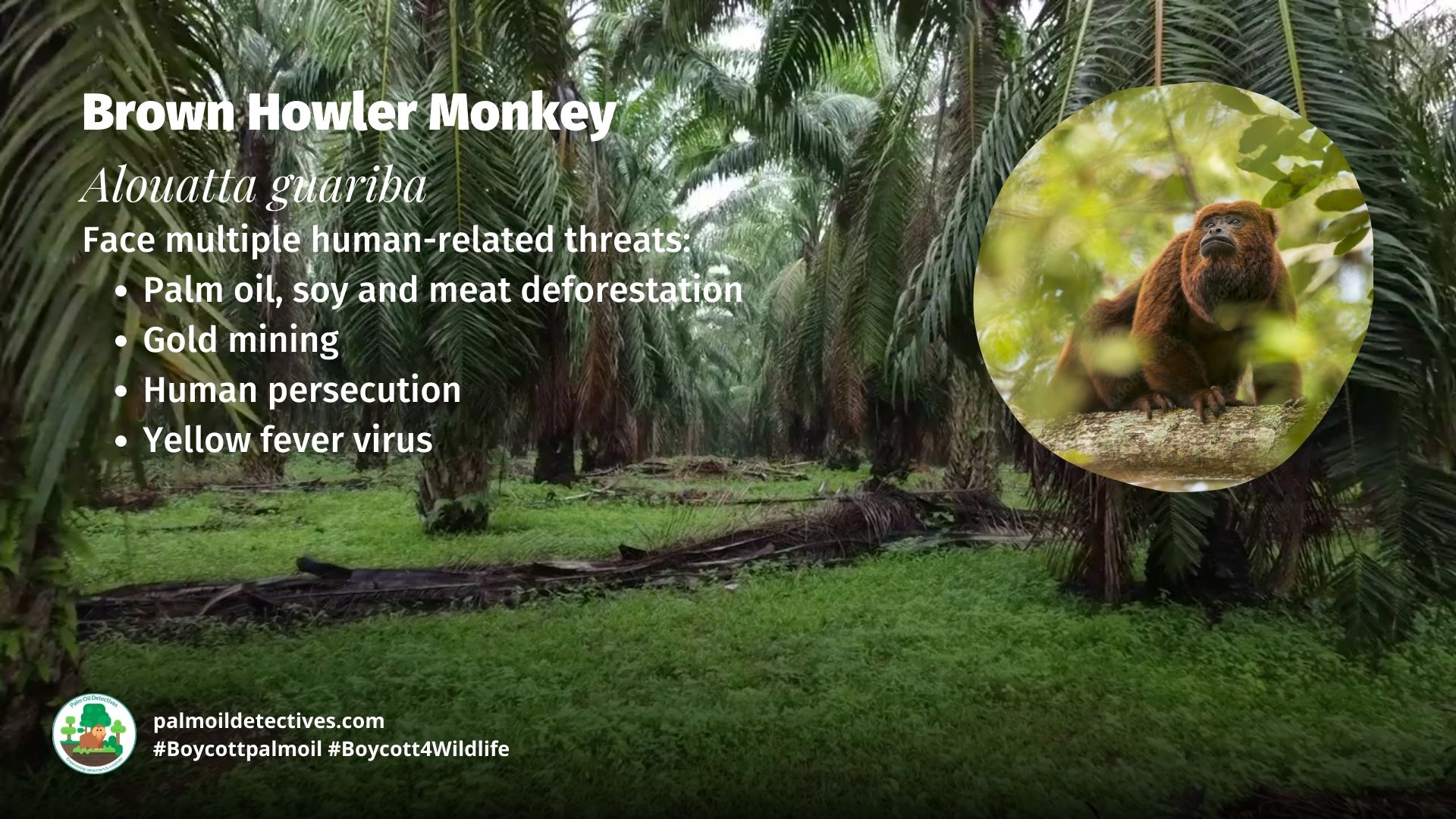


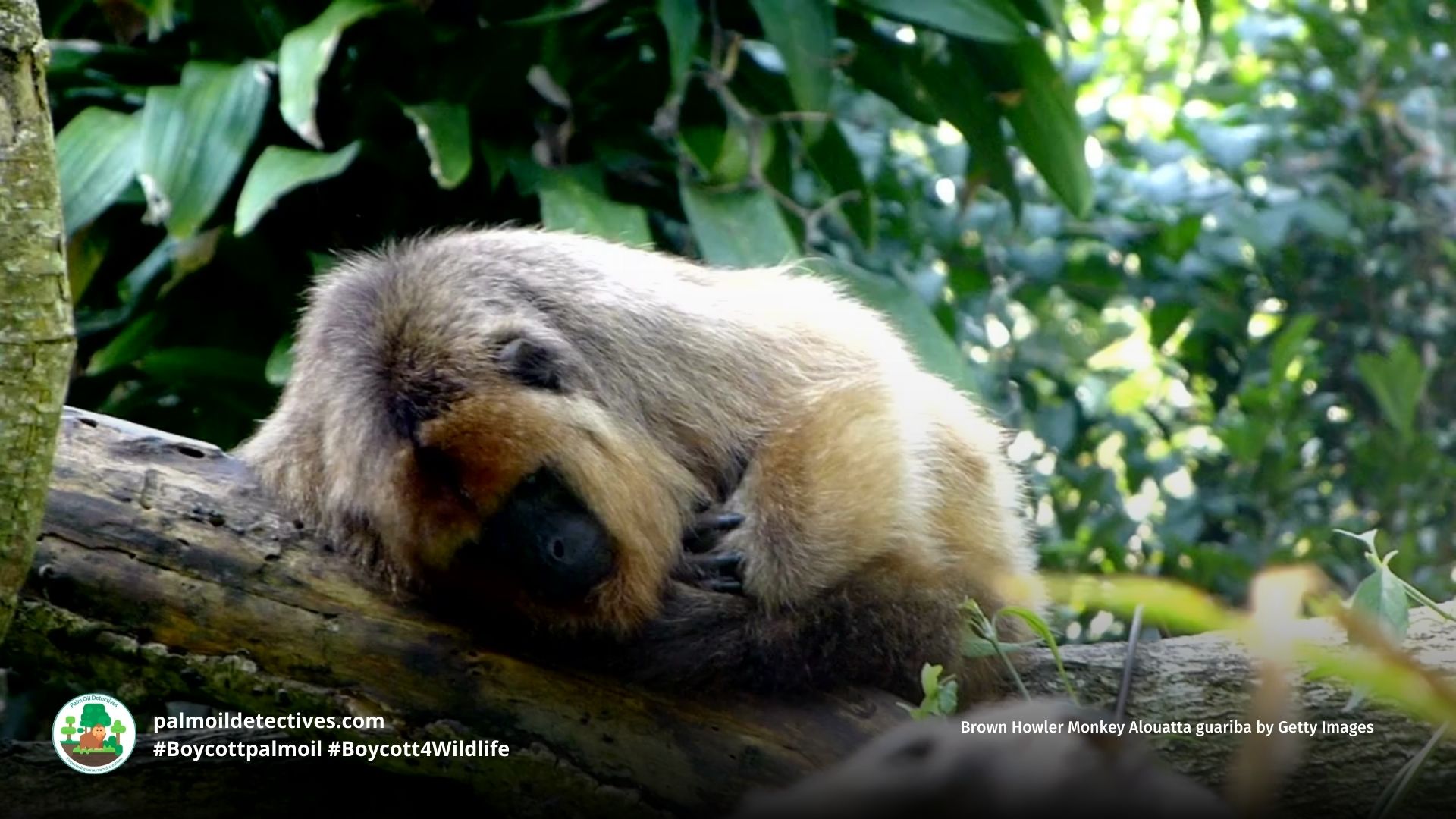
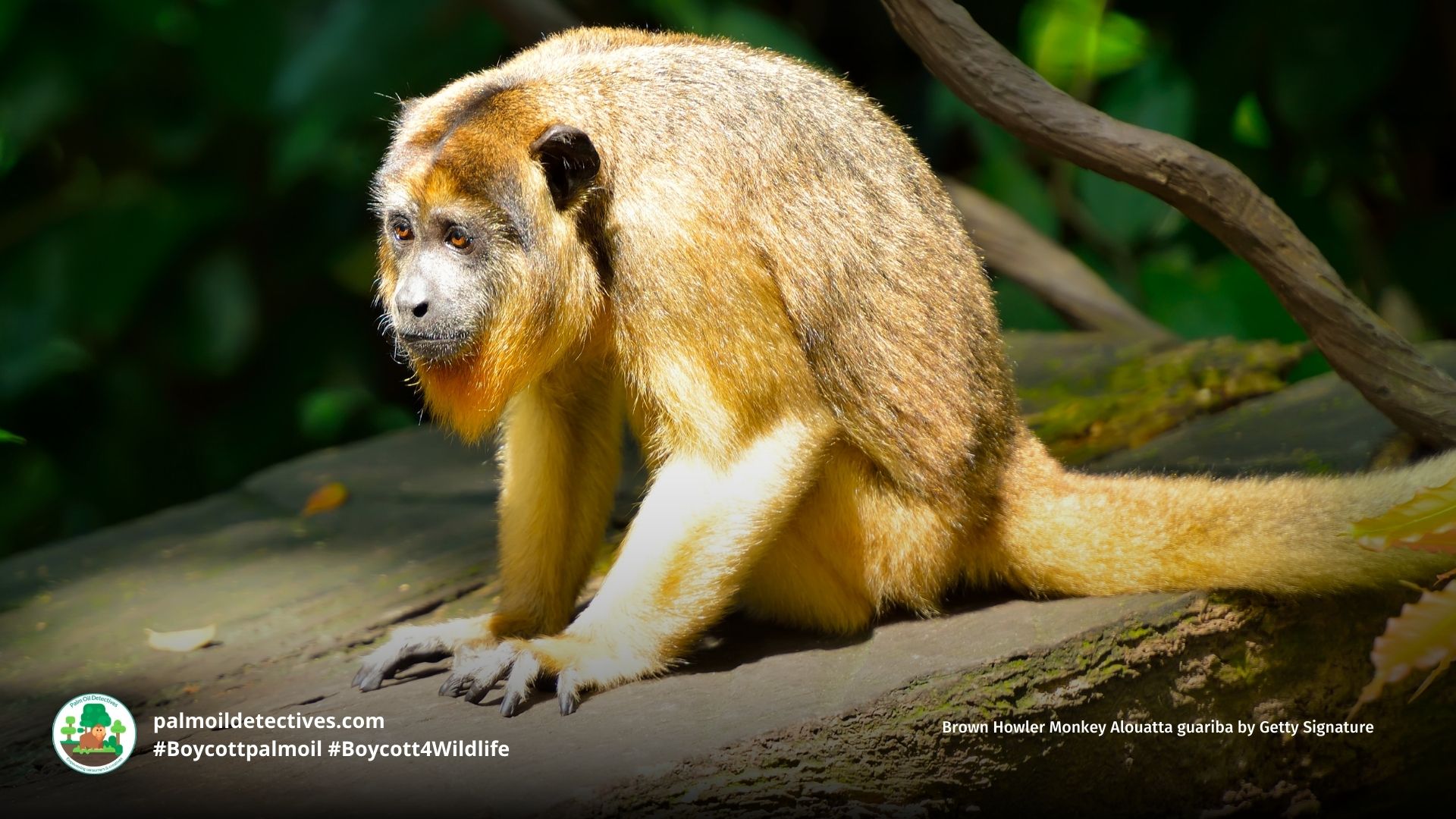
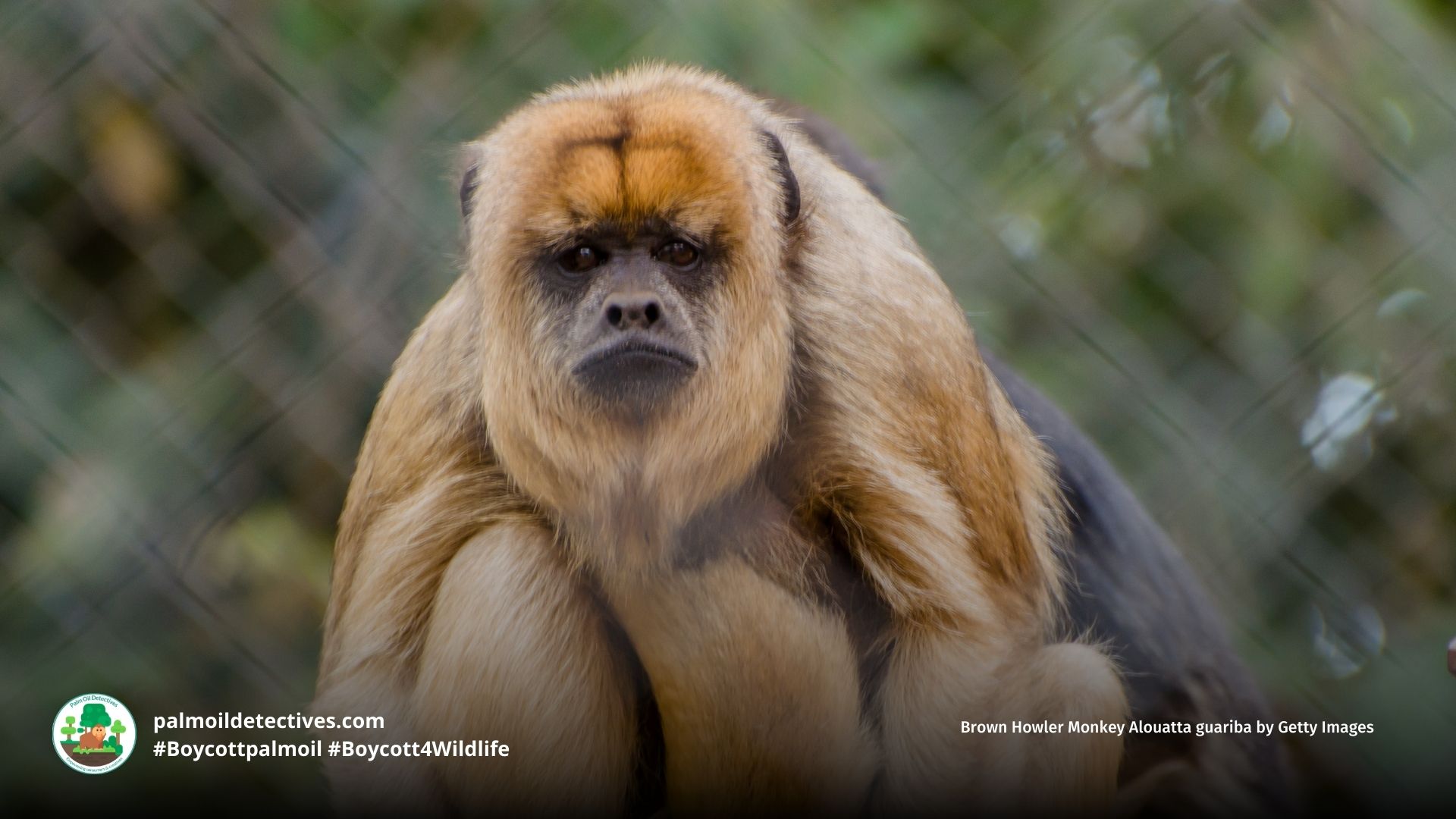
Behaviour & appearance
These monkeys are incredibly gregarious and typically live in groups of between two to 11 individuals. They are most active throughout the day, however will rest during the heat of midday.
The larynx and chests of Howler Monkeys are enlarged. Through this resonating chamber they are able to produce loud signature howls, heard from up to 2 kilometres away.
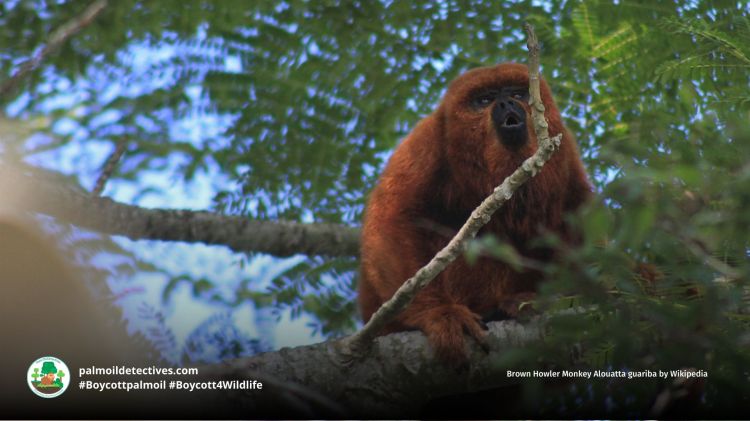
Howling for warnings, food dominance and mate dominance
Their famous howls or roars have a blood-curdling cadence to them which performs the group function of mate defence. Howling typically happens when both males and females are present in groups. Other reasons for howling are as gestures of dominance when food sources are scarce or to alert others in the group of imminent danger.
Males Brown Howlers are larger than females and more dominant, they will commence the howling and females seldomly howl compared to males.
When Brown Howlers are threatened by a bird of prey (the Black Hawk Eagle is their main aerial predator), they will howl once and then remain silent as a group. The Black Hawk Eagle has a penchant for young Brown Howlers, so the priority of the adult monkeys is to protect their young. The howlers will silently descend to the understory of the trees and then disperse in an organised way.
If the group are threatened by a land-based predator, they will stay in the tree canopy and remain silent together for five to fifteen minutes.
Rubbing for sexual dominance and communication
Rubbing is used as a gesture of group communication that indicates dominance and territorial signalling. Males rub females for sexual intention and males are considered to be more dominant as they rub more often than females. Dominant females tend to rub more often than less dominant females.

Geographical range
Brown Howlers live in the Atlantic forests of South America, mainly in Brazil and Argentina. They are able to live in the lowland, montane and mixed broadleaf forests and spend the majority of their lives hanging out in the tree canopies.
Threats
Brown Howler Monkeys face a range of human-related threats, including:
- The yellow fever virus: Brown Howlers are highly vulnerable to the yellow fever virus, which has a high mortality rate. When large numbers of monkeys are found dead, this is an indication that an outbreak has occurred.
- Habitat loss for mining, palm oil, soy and meat deforestation: Large swathes of the Amazon rainforest continue to be destroyed for gold mining, palm oil, soy and meat related deforestation.
- Human persecution: People living near to the monkeys have considered that they are responsible for outbreaks of the yellow fever virus – this has lead to them being killed for this reason. This is not the case as the virus is spread via a mosquito vector. The widespread killing of Brown Howler monkeys must be stopped.
Diet
Brown Howlers are avid consumers of wild figs, petioles, buds, seeds, moss, flowers, twigs and plant stems – they are folivores and frugivores. These monkeys are essential to eco-systems and perform an important function in dispersing seeds throughout the rainforest.
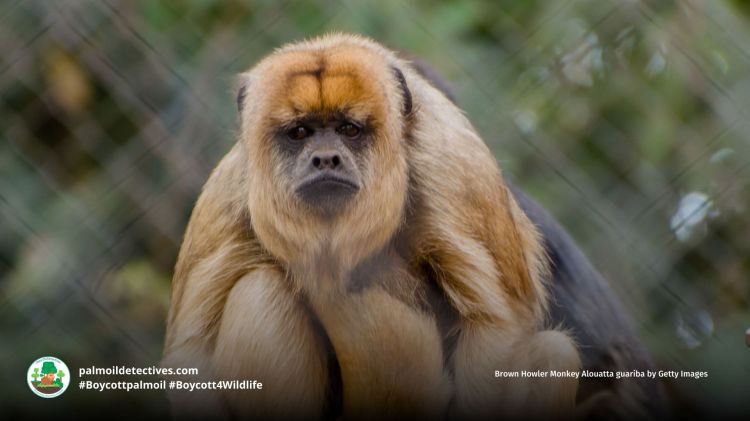
Mating & reproduction
Howler Monkeys are difficult to breed in captivity, therefore not enough is known about their mating and reproduction. They are capable of breeding all year round and a pregnancy lasts for approximately 6 months, after this one infant is born. Between pregnancies there is a break period of around 19 months. If a baby dies then the mother will typically become pregnant earlier than the 19 month break period. Young monkeys are weaned at one year old. Females come into oestrus at about 3.6 years old and males reach sexual maturity at 5 years old.

Support the conservation of this species
This animal has no protections in place. Read about other forgotten species here. Create art to support this forgotten animal or raise awareness about them by sharing this post and using the #Boycottpalmoil #Boycott4Wildlife hashtags on social media. Also you can boycott palm oil in the supermarket.
Further Information

Jerusalinsky, L., Bicca-Marques, J.C., Neves, L.G., Alves, S.L., Ingberman, B., Buss, G., Fries, B.G., Alonso, A.C., da Cunha, R.G.T., Miranda, J.M.D., Talebi, M., de Melo, F.R., Mittermeier, R.A. & Cortes-Ortíz, L. 2021. Alouatta guariba (amended version of 2020 assessment). The IUCN Red List of Threatened Species 2021: e.T39916A190417874. https://dx.doi.org/10.2305/IUCN.UK.2021-1.RLTS.T39916A190417874.en. Accessed on 07 September 2022.
Brown Howler Monkey on Animalia.bio
Brown Howler Monkey on Wikipedia
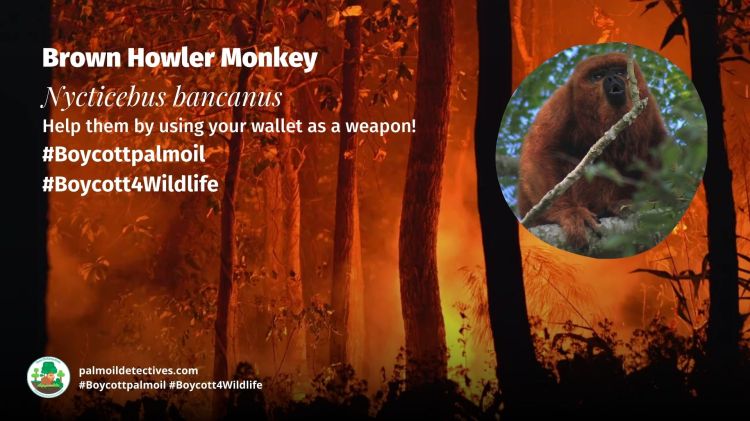

How can I help the #Boycott4Wildlife?
Contribute in five ways
1. Join the #Boycott4Wildlife on social media and subscribe to stay in the loop: Share posts from this website to your own network on Twitter, Mastadon, Instagram, Facebook and Youtube using the hashtags #Boycottpalmoil #Boycott4Wildlife.
2. Contribute stories: Academics, conservationists, scientists, indigenous rights advocates and animal rights advocates working to expose the corruption of the palm oil industry or to save animals can contribute stories to the website.
3. Supermarket sleuthing: Next time you’re in the supermarket, take photos of products containing palm oil. Share these to social media along with the hashtags to call out the greenwashing and ecocide of the brands who use palm oil. You can also take photos of palm oil free products and congratulate brands when they go palm oil free.
4. Take to the streets: Get in touch with Palm Oil Detectives to find out more.
5. Donate: Make a one-off or monthly donation to Palm Oil Detectives as a way of saying thank you and to help pay for ongoing running costs of the website and social media campaigns. Donate here

